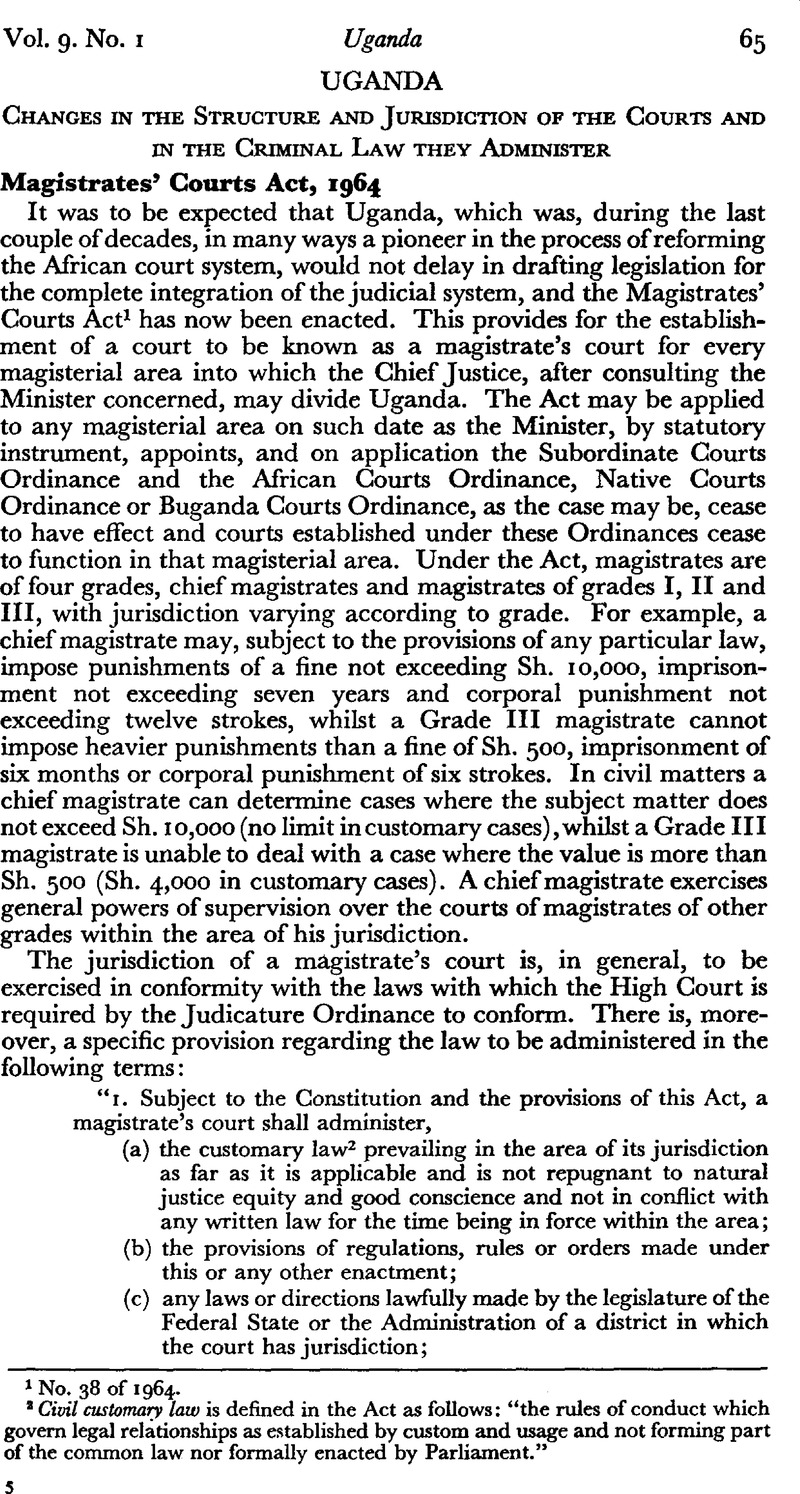Published online by Cambridge University Press: 28 July 2009

page 65 note 1 No. 38 of 1964.
page 65 note 2 Civil customary law is defined in the Act as follows: “the rules of conduct which govern legal relationships as established by custom and usage and not forming part of the common law nor formally enacted by Parliament.”.
page 66 note 1 For the benefit of those readers who are interested in tracking down absurdities which can be deduced from too literal an interpretation of a particular piece of legislation, it may be pointed out that, whilst there is no special definition of “married woman” in the Penal Code, there is a definition of “wife” as “the wife of a monogamous marriage”. This passage accordingly reads, in the light of this definition, “Any man who has sexual intercourse with any married woman not being his wife by a monogamous marriage, commits adultery.” Adultery would, by this interpretation, therefore, be committed by a man married by customary law who has sexual intercourse with his wife.
page 67 note 1 There are, in fact, a number of obscurities in the Act as drafted; for example, the oblique amendment of the Penal Code is perplexing. If the adultery section has only been inserted “for the purposes of the Act”, does this mean that the section cannot be invoked in respect of the jurisdiction exercised by the High Court under the Judicature Ordinance ?
page 68 note 1 S.I. 1964 No. 251.
page 68 note 2 This is the same list of sections as that which afterwards appeared in the Magistrates’ Courts Act (see p. 66 ante), except that the latter included the new section of the Penal Code dealing with adultery.
page 69 note 1 Cf. Penal Code s. 245.
page 69 note 2 Cf. Penal Code ss. 183 and 186.
page 69 note 3 Cf. Indian Penal Code s. 378.
page 69 note 4 Not only are there divergences between the Buganda Law and the Penal Code in the definition of offences but these also occur in respect of punishment; for example, the maximum punishment for theft of cattle is seven years under the Penal Code (s. 255) but ten years under the Buganda Law (s. 107).
page 69 note 5 On the other hand, Buganda courts have jurisdiction to deal with cases of attempted murder, since no death has here occurred, and in respect of such a charge this section would, of course, be relevant.
page 70 note 1 See, for example, R. v. Muigira s/o Katairna, 6 U.L.R. 118.
page 70 note 2 Section 76.
page 71 note 1 No. 41 of 1964.